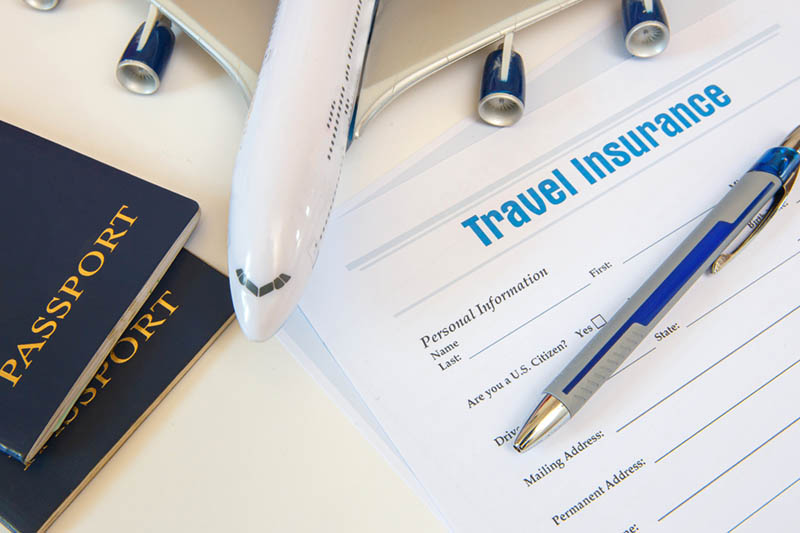Extreme Sports Travel Insurance: Don't Leave Home Without These Tips!
Adventure sports are an incredible way to explore the world and push your limits. Whether you're scaling towering cliffs, diving into the depths of the ocean, or skiing down pristine alpine slopes, the exhilaration of these activities is unmatched.
However, with these thrills comes a degree of risk, making travel insurance a vital component of any adventure sports trip. But not all travel insurance policies are created equal, especially when it comes to covering extreme sports and outdoor activities.
In this comprehensive guide, we'll walk you through everything you need to know about securing the right travel insurance for your adventure sports trips. From understanding the different categories of outdoor activities and their coverage to knowing the common exclusions and what to look for in a policy, we've got you covered.
Understanding the Categories of Outdoor Activities

Before diving into the specifics of travel insurance, it's essential to understand the different categories of outdoor activities. Travel insurance policies often classify activities into various categories, each with its own level of risk and coverage options.
1. Leisure and Recreational Activities
These are activities that most people engage in during their vacations, such as hiking on marked trails, swimming, or cycling. These activities are generally considered low-risk, and most travel insurance policies will cover them without requiring any additional riders or add-ons.
2. More Extreme Sports
This category includes activities that are riskier and more physically demanding than standard recreational activities. Examples include bungee jumping, scuba diving, and snowboarding. Coverage for these activities varies significantly between insurance providers, and some may require you to purchase additional coverage.
3. Competitions and Professional Sports
If you're participating in a competition or engaging in professional-level sports, your insurance needs will be more complex. Many standard travel insurance policies exclude coverage for competitive events, so it's crucial to find a policy that explicitly includes them or offers a specific rider for such activities.
Common Exclusions in Travel Insurance Policies

Travel insurance is designed to protect you from unforeseen events, but it’s important to note that not everything is covered, especially when it comes to adventure sports. Here are some common exclusions you should be aware of:
1. Professional Competitions
If you're participating in a professional sports competition, most travel insurance policies will not cover you. This is because the risks associated with professional-level activities are significantly higher than those of amateur or recreational sports.
2. Contact Sports
Sports that involve physical contact, such as rugby or American football, are often excluded from standard travel insurance policies. The risk of injury in these sports is high, and insurers generally consider them too risky to cover without a specific rider.
3. Unsupervised Canoeing or Rafting
While supervised water activities might be covered, unsupervised canoeing or rafting is typically excluded. The risks associated with these activities, especially in remote areas, make them a higher liability for insurance companies.
4. Off-Trail Skiing
Skiing is a popular winter sport, but if you're skiing off-trail or in areas not monitored by ski patrol, your insurance may not cover you. Off-trail skiing is considered highly risky due to the potential for avalanches and other hazards.
5. Mountaineering Over a Certain Height
Mountaineering is an exhilarating activity, but it comes with significant risks, especially at high altitudes. Many travel insurance policies set a maximum height limit for coverage, often around 3,000 to 4,000 meters. If you’re planning to climb higher, you’ll need to find a specialized policy.
Personal Accident and Liability Coverage

Personal accident and liability coverage is an essential part of any travel insurance policy, but when it comes to adventure sports, there are additional considerations.
1. Exclusions for Vehicles, Aircraft, and Watercraft
Accidents involving vehicles, aircraft, watercraft, and motorcycles are more likely to occur during adventure sports activities. As a result, many insurers exclude coverage for these incidents or require specific riders. For example, if you're planning to go jet skiing or motorbiking, you may need to purchase additional coverage to ensure you're protected.
2. Liability Coverage
Liability coverage protects you if you accidentally injure someone else or damage their property. This is particularly important for activities like skiing or snowboarding, where collisions can occur. However, be sure to check if your policy includes coverage for the specific activities you plan to engage in, as some insurers may exclude high-risk sports.
Riders and Add-Ons for Specific Sports
When it comes to extreme sports, many travel insurance providers offer riders or add-ons to enhance your coverage. These options can increase your premiums, but they provide essential protection for higher-risk activities.
1. Winter Sports Riders
If you're planning a winter sports trip, you'll likely need to purchase a winter sports rider. This rider typically covers activities like skiing, snowboarding, and ice climbing. The cost of this rider can vary, but it generally adds about $8-10 per week to your premium.
2. Water Sports Riders
Water sports, such as scuba diving, windsurfing, and jet skiing, often require an additional rider. Coverage for water sports is essential, especially if you're engaging in these activities in remote locations where medical care may be limited.
Comparing Travel Insurance Policies for Adventure Sports
Choosing the right travel insurance policy can be daunting, especially with so many options available. To help you make an informed decision, we’ve compiled a comparison of ten popular travel insurance providers and the types of outdoor activities they generally cover.
1. FWD Travel Insurance
FWD is known for its comprehensive coverage of leisure outdoor activities and more extreme sports, including bungee jumping. This policy is ideal for those seeking a wide range of coverage without the need for multiple add-ons.
2. Income Travel Insurance
Income Travel Insurance offers coverage for activities like scuba diving up to 30 meters and skiing. However, it's important to note that rock climbing is only covered if done on man-made walls. This policy is well-suited for travelers who enjoy water sports and winter activities.
3. MSIG Travel Insurance
MSIG provides coverage for both leisure activities and extreme sports, with specific conditions. For example, rock climbing is covered, but it must be done with a harness and on man-made walls. This policy is a good choice for those who engage in a mix of different adventure sports.
4. Singlife Travel Insurance
Singlife offers limited coverage for adventure sports, with hot air ballooning being the main activity included. However, there is an option to add riders for winter and water sports, making it a flexible choice for travelers with specific needs.
5. DBS Chubb Travel Insurance
DBS Chubb covers scuba diving up to 30 meters (with certifications) and trekking below 3,000 meters. This policy is tailored for those who prefer high-altitude trekking and diving, but it may not be suitable for more extreme activities.
6. Great Eastern Travel Insurance
Great Eastern offers coverage for leisure activities and bungee jumping only. This policy is best for travelers who participate in moderate adventure sports without venturing into higher-risk activities.
7. Sompo Travel Insurance
Sompo covers scuba diving up to 30 meters (with certifications), trekking below 3,500 meters, and rock climbing on man-made walls. It’s a solid option for those who enjoy a variety of outdoor activities, but again, certain high-risk sports may require additional coverage.
8. Etiqa Travel Insurance
Etiqa provides coverage for leisure activities and bungee jumping, making it similar to Great Eastern in its offerings. This policy is suitable for travelers who want basic adventure sports coverage without the need for extra riders.
9. Direct Asia Travel Insurance
Direct Asia requires the purchase of additional riders for sports and activities coverage. While this may increase the cost of your premium, it allows for a more customized approach to your insurance needs, covering exactly what you plan to do.
10. OCBC Travel Insurance
OCBC offers coverage for leisure activities and extreme sports like bungee jumping, but only under their Ultimate Plan. This policy is ideal for thrill-seekers who want comprehensive coverage but are willing to pay a bit more for it.
Important Considerations for Adventure Sports Travel Insurance
When selecting travel insurance for your adventure sports trip, there are several key factors to keep in mind:
1. Policy Limitations
Always read the fine print of your policy to understand any limitations or restrictions. For example, some policies only cover rock climbing if it’s done on man-made walls or with specific safety equipment.
2. Medical Evacuation Coverage
For adventure sports that take place in remote or inaccessible areas, higher medical evacuation coverage is essential. Look for policies that offer at least $500,000 in evacuation coverage to ensure you're protected in the event of a serious injury far from medical care.
3. Equipment Coverage
If you're bringing expensive gear on your trip, consider adding equipment coverage to your policy. This will protect you in case your gear is lost, stolen, or damaged. Be sure to check the specific coverage limits, as some policies may have caps on the amount they’ll reimburse.
Finding the Best Travel Insurance for Your Adventure
Travel insurance is a must for anyone embarking on an adventure sports trip, but finding the right policy requires careful consideration. You need to ensure that your policy covers the specific activities you plan to engage in and that you understand any exclusions or limitations.
When shopping for travel insurance, compare different providers and policies to find the one that best fits your needs.
Whether you’re bungee jumping, scuba diving, or trekking through the mountains, having the right insurance can give you the peace of mind to fully enjoy your adventure.
Remember, the thrill of adventure sports lies in the balance of risk and reward. With the right travel insurance, you can tip the scales in favor of reward, knowing that you’re covered no matter what challenges come your way. Safe travels and happy adventuring!
